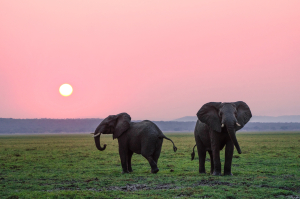The country is all set to start the National Tiger Census from all the tiger-inhabiting national parks and nearby forests across the country from December 5.
The census, led by the Department of National Parks and Wildlife Conservation (DNPWC), is being launched from Chitwan National Park (CNP). Minister for Forest and Environment Ramsahay Prasad Yadav will inaugurate the National Survey in Sauraha of CNP on December 5.
All the tiger-inhabiting national parks are divided into three complex — Chitwan and Parsa and surrounding forest areas as one complex, Banke and Bardiya and surrounding forest areas as the second complex and Shuklaphanta and the nearby Laljhadi and surrounding forest areas as the third complex.
Tigers are found in five national parks and nearby forest areas. They include – CNP, Bardiya National Park (BNP), Parsa National Park (PNP), Shuklaphanta National Park (SNP) and Banke National Park (BaNP) and surrounding forest areas. Chief Conservation Officer of CNP Haribhadra Acharya said that necessary human resources have been prepared for the census.
The area of the Chitwan-Parsa complex has been divided into three blocks and those three blocks are divided into 942 grids of two-by-two kilometres.
Some 360 pairs of cameras will be deployed to the CNP. On the grids of each block, two automatic cameras will be attached to trees, trunks and poles at a height of about three to six feet from the ground. These cameras are kept in one place for 15 days and nights.
After 15 days, the cameras will be taken out and will be shifted to another block, he said. Some 100 enumerators will be mobilized to survey the Chitwan-Parsa complex. Bishnu Prasad Shrestha, Chief Conservation Officer at BNP, said that they have made four blocks to count the tigers inside the park and separate blocks for Khata biological corridor and other community forest areas in Banke and Bardiya.
The count will start in the second week of December in BNP. He said that this time a block is also being made in the Chure area as the number of tigers in the region has also increased. Altogether 300 pairs of cameras will be fitted in two-by-two kilometres distance, he informed.
Cameras will be kept there for 15 to 21 days and the number of individual tigers will be analyzed as per the pictures captured in the field. “It will take two to three months to finalise the result,” Shrestha said.
“We will identify individual tigers by means of the stripes because every tiger has different stripes,” he said. “We have challenges in BNP as there might be high risk in the core and Babai areas but security forces have been mobilised in the risky areas,” he said.
Around 100 persons including Armed Police Forces, Police Personnel, park staff, forest staff, citizen scientists, nature guides and representatives from WWF will be mobilised in the counting, he informed.
“We hope that the number of tigers will increase in comparison to the last count and help to achieve the global commitment to double the tiger population in 2022,” Shrestha said.



